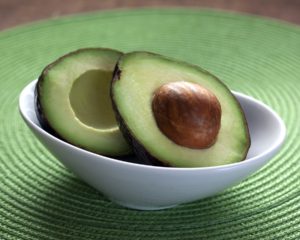Say what??? Eat more fat and lose weight?? How can that be so??? Well, in the world of diet and nutrition, eating a high fat diet is all the rage. Let’s take a look and see what all the fuss is about.
The diet du jour that advocates this theory is the Ketogenic diet. There are several variations to this plan, but they all involve eating a high fat and very low carbohydrate diet. This concept is reminiscent of the Atkins diet from the 80’s. Dr. Atkins popularized the theory of ketosis for weight loss which is the basic premise of the Ketogenic diet. However, the problem with the Atkins diet was that it was high protein in addition to high fat and the quality of fat was unhealthy. People were consuming bacon, cheese, hydrogenated oils and lots of red meat. Yes, they may have lost weight, but in the process, their bodies were being filled with inflammatory foods. Consequently, this diet became very controversial.
So, how does eating a high fat diet help you lose weight? When you reduce the amount of carbohydrates you are consuming and increase the amount of fat, you are putting your body into ketosis. This metabolic state makes the body more efficient at burning fat instead of glucose for energy. High fat diets can help regulate blood pressure and blood sugar levels. Increasing the amount of fat helps with satiety, the feeling of being satisfied and full after eating. Your cravings for carbohydrates will begin to diminish. All of these factors combined will contribute to a weight loss plan.
Originally, the Ketogenic diet was a diet for treating neurological diseases like epilepsy. Our brain is 60% fat, therefore, eating a high fat diet is essentially supplying energy to the brain. Currently, the diet is being used as a therapy for Alzheimer’s and autism. So, the benefit of adding more fat into your diet extends beyond just losing weight.
As we know, not all fats are created equal so it is important to choose your fats wisely. Whenever possible, eat fats that are in their natural state. For example, avocados, nuts and seeds, grass fed butter, coconut, olives and extra virgin olive oil. Nut butters are a great source of healthy fats, but be sure to read the ingredient label. A lot of manufacturers add cane sugar and we do not like cane sugar in our food! Check out the single serving packets of nut butters that are available now. They are convenient and easy to toss into your purse or lunch bag. And, if you have not tried coconut butter, run, don’t walk to the nearest grocery store and pick up a jar. Coconut butter is the meat inside a coconut blended into a sweet, creamy, fatty concoction that will quickly become your new best friend. Trust me, this is the fat bomb!! One of my favorite brands for nut butters is Artisana. A bit more expensive, but worth every penny.
Incorporating healthy fats into every meal is key to this plan. So, if you are a smoothie drinker in the morning, try adding a tablespoon of coconut butter or a 1/4 cup of almonds to your smoothie. You can also add coconut oil or grass fed butter to your morning coffee. It may sound weird, but if you blend it for a minute, you end up with a creamy beverage that is really delicious. You will never know you are drinking butter ;). For lunch, add some olives to your salad or avocado to your sandwich. Or, grab a handful of walnuts for some extra crunch. Walnuts are a superfood for your brain. Just take a look at their shape….oddly, they resemble a brain!! And for dinner, cook some wild salmon which is loaded with healthy fats and omega 3’s. Or, try the recipe below. Avocados are so nutritious and versatile. They are abundant in monounsaturated fats and contain vitamins A, C, E and K. This recipe is super easy to throw together. You can eat it with chopped veggies for a quick snack or add it to a salad or bowl of quinoa. The addition of beans makes it creamy and full of protein!
We are all unique and we must honor that when it comes to finding what works for our bodies. If you want to add more fat into your diet for the health benefits or for weight loss, start slowly and pay attention to how you feel. Do you have more energy? Are you thinking more clearly? Have your cravings lessened? If you can answer yes to these questions, then you are on the right track. If not, you can try adding less fat and see if that makes a difference. About 20% of the population has a specific gene that is not compatible with a high fat diet. Those folks will actually feel worse when they add in more fat. So, see what works for you.
I hope you found this information helpful. Next time, we will take a look at carbohydrates and why we continue to have a love/hate relationship with them. In the meantime, if you want more ideas on how to incorporate healthy fats into your diet, schedule your free consultation with me.
Seasonal Recipe
1 15 oz. can cannellini bean, rinsed and drained
juice of 1 lemon or lime
pinch salt
1 bunch of cilantroBlend all ingredients in a food processor.
If you would like some spice, try adding some red pepper flakes or hot sauce.
Enjoy!


